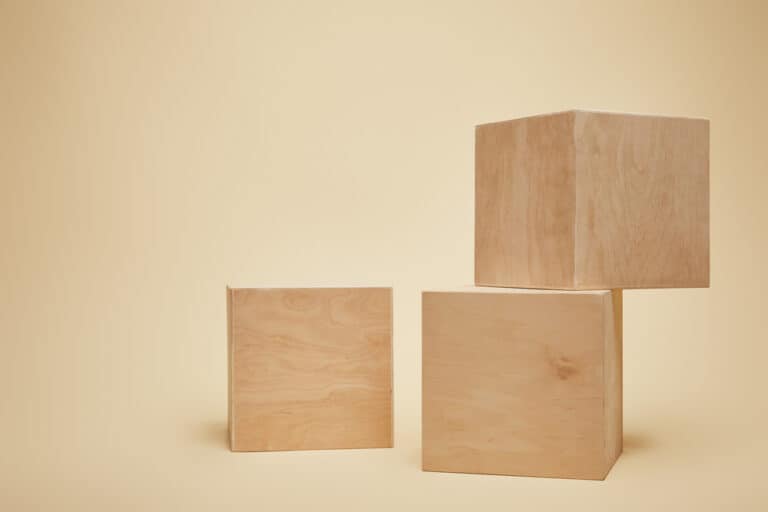Black walnut is a difficult wood to carve but is worthwhile due to its incredible beauty. It works well both in the round and for relief carving. I personally prefer to carve Black walnut when it is green as it is slightly easier. Beginners should stay away, Black Walnut is best for advanced wood carvers.
Pros of Black Walnut
- Rich color and grain: Black Walnut features a gorgeous dark color with a unique and rich grain making it one of the most beautiful woods to carve with in my opinion.
- Durability and strength: It’s a hardwood that is resistant to wear and tear, making your carved pieces long-lasting and suitable for functional items.
- Workability: With sharp tools and the right approach, you can create intricate details and impressive carvings in this wood.
- Oily texture: Black Walnut has a naturally oily composition that can help protect it from moisture and other elements. This allows for a smooth finish and prevents splitting and warping.
Cons of Black Walnut
- Hardness and Density: This can make it difficult to carve with traditional hand tools.
- Tool Maintenance: Due to the hardness of black walnut, your carving tools may dull more quickly than when working with softer woods.
- Appearance Variations: Inconsistencies in color, such as streaks or variations from light to dark, might make it difficult to achieve a uniform appearance in your final piece.
- Expense: Black walnut is relatively more expensive than many other wood options for carving.
Tips for Carving With Black Walnut

Choose the Right Tools
- Select sharp, high-quality carving tools to work with walnut efficiently. The wood is harder than many other types of wood and can be challenging to carve without proper equipment.
- Use gouges, chisels, knives, and riffler rasps for precise carving and shaping.
Work With the Grain
- Black walnut is known for its prominent grain patterns. Pay attention to the grain direction to avoid tear-outs or unnecessary strain on your tools.
- When making deep cuts along the grain, take extra care to avoid causing the wood to pop out.
Keep Your Tools Sharp
- Black walnut can potentially dull your carving tools over time. Regularly sharpen your tools to maintain their effectiveness and ease of use while working with this hardwood.
Protect Yourself
- Always practice safety measures while working with any wood, and especially with walnut, as it can sometimes cause allergic reactions through contact or dust inhalation.
- Wear a dust mask, safety goggles, and gloves to minimize potential hazards.
Start Simple
- If you’re new to carving black walnut, begin with relatively simple projects like sculptures with basic lines or relief carvings to gain experience working with the wood’s unique properties.
Related: The 7 woods I prefer carving with
Is Black Walnut Good for Whittling?
Yes, black walnut can be an excellent choice for whittling. However, due to its density and hardness, black walnut can dull carving tools more quickly than other woods. To prevent this from happening, it’s important to use sharp tools and a mallet when working with black walnut and to sharpen your tools frequently.
Wood Carving Projects that Black Walnut is Best for
Relief Carving
Black walnut wood with its tight grain and beautiful hues is ideal for relief carving. It takes incredible detail and can be carved either green or dry. The fine grain enables you to create stunning designs for your artwork. Bring your creative ideas to life with this wonderful wood.
Chip Carving
Whenever you think of intricate patterns and geometric shapes, you should consider using black walnut for chip carving. Its sturdy nature makes it perfect for creating stunning patterns on items such as boxes, mirrors, or picture frames. Add elegance and sophistication to your projects with this wonderful hardwood.
Furniture Making
Black walnut wood has been historically popular for furniture making due to its durability and visually appealing grain patterns. Use it to carve beautiful pieces like chairs, tables, or cabinets. The rich brown color with black streaks will add a timeless touch to your woodcarving projects.
Kitchen Utensils
Being a very sturdy hardwood, black walnut is an excellent choice for carving kitchen utensils, such as spoons, cutting boards, and salad servers. Their durable nature combined with the visual appeal of black walnut makes your day-to-day kitchen tools not only functional but also aesthetically pleasing.
Where to Buy Black Walnut
If you are looking to purchase black walnut for carving, there are several places where you can find high-quality wood. One option is to look for specialty woodworking stores like Woodworkers Source, which provides a variety of hardwood lumber, including walnut, for woodworkers of all skill levels.
Etsy is another excellent source, as there are numerous artisans and wood suppliers that offer black walnut carving blocks, such as Black Walnut Knife Handle Block or Stabilized Black Walnut Knife Scale Sets. It’s a fantastic platform to find unique and quality wood pieces for your carving projects.
Remember that when buying black walnut, make sure to inspect the wood for its quality and make sure it’s suitable for your carving project. The grain, density, and moisture content are important factors to consider, as they will affect your carving experience and the final results.
Frequently Asked Questions
What tools are best for hand carving black walnut?
When hand carving black walnut, it’s essential to use sharp tools specifically designed for carving wood. Some popular choices include gouges, chisels, knives, and veiners. Make sure to keep your tools sharp, as walnut can be harder than other types of wood, and dull tools will make it difficult to achieve clean cuts and intricate details.
How to properly season black walnut for carving?
To season black walnut for carving, you need to let the wood dry and stabilize. This reduces the chances of cracking and warping. Cut the wood into smaller pieces to speed up the drying process, and store it in a cool, dry place with proper air circulation. Drying time varies depending on the thickness and size of the wood, so patience is key.
What are some popular patterns and designs for black walnut carvings?
Black walnut is ideal for creating sculptures, large figures with simple lines, relief carvings, and signs. Its rich color and attractive grain patterns make it suitable for a variety of artistic styles, from traditional to contemporary. You can let your creativity guide you – some popular themes include animals, landscape scenes, abstract designs, and geometric patterns.
How to maintain and protect black walnut carvings?
To maintain and protect your black walnut carving, make sure to dust it regularly and avoid placing it near direct sunlight or heat sources. Use a soft, dry cloth to remove dirt and dust, and avoid using water or household cleaners. To enhance and preserve the natural color and beauty of the wood, you may consider applying a natural oil or protective finish, such as Tung oil or polyurethane, following the manufacturer’s instructions.
Where to buy black walnut wood blanks for carving?
Black walnut wood blanks are available at local lumberyards, specialty woodworking stores, or online through various woodworking websites. Make sure to select pieces with straight grain for easier carving and to avoid any potential issues like knots or irregular growth patterns.
What safety precautions should be taken when working with black walnut wood?
When working with black walnut wood, it’s essential to wear proper protective gear, such as safety glasses, gloves, and a dust mask. The wood produces fine dust particles, which can irritate your eyes, skin, and respiratory system. Additionally, ensure that the carving area is well-ventilated and use sharp tools to minimize the risk of injury. Finally, always follow the manufacturer’s guidelines for using any tools and equipment, and work at a comfortable pace to maintain control over the carving process.





